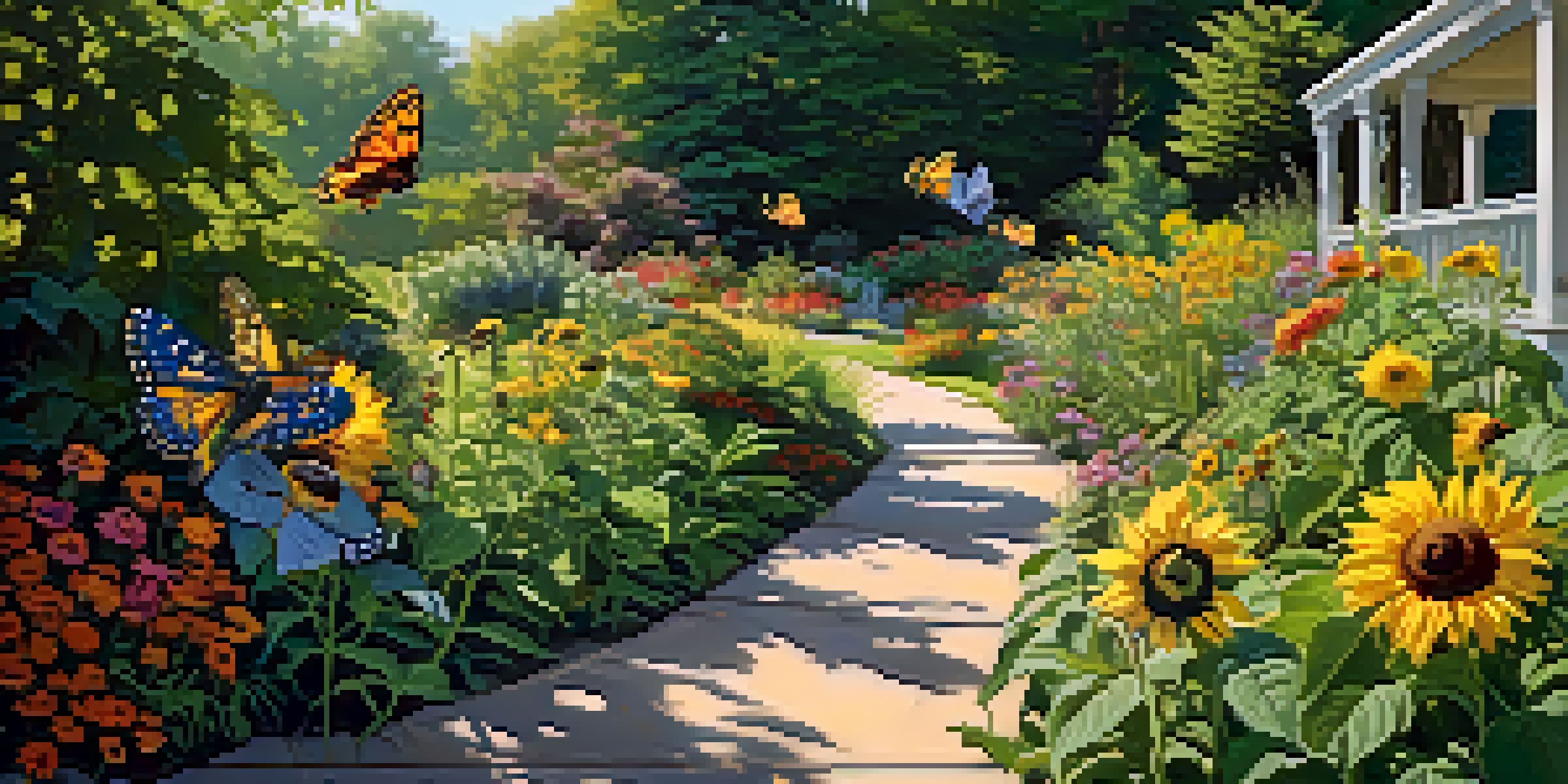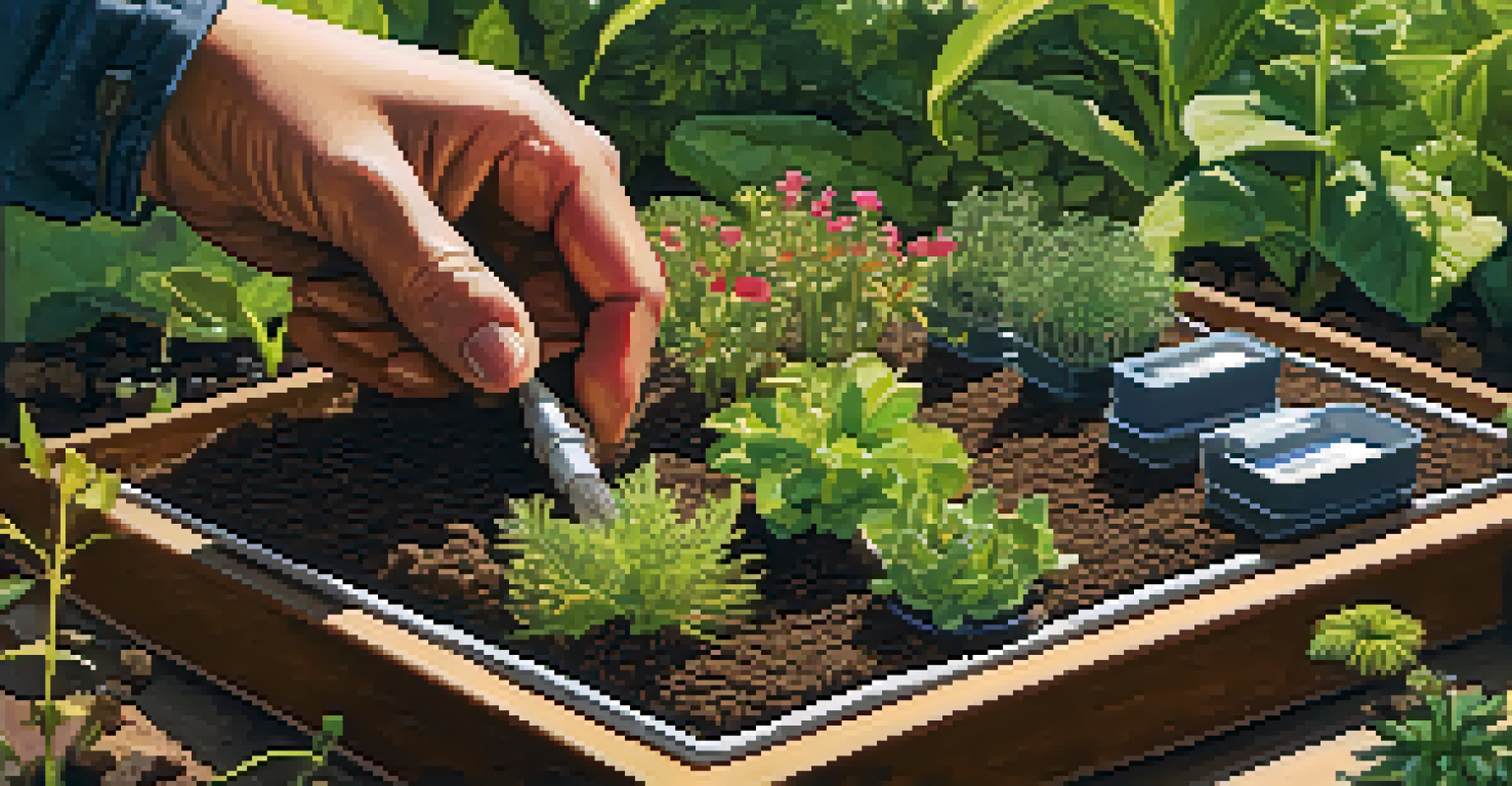Choosing Native Plants for Your Sustainable Garden Design

Understanding Native Plants and Their Benefits
Native plants are species that thrive in a specific region without human intervention. They have adapted to local climate, soil, and rainfall patterns, making them an excellent choice for sustainable gardening. By choosing these plants, gardeners can reduce water usage and minimize the need for fertilizers and pesticides.
The greatest threat to our planet is the belief that someone else will save it.
Moreover, native plants provide essential habitats for local wildlife, including birds, bees, and butterflies. This creates a balanced ecosystem in your garden, promoting biodiversity. When you plant native species, you support the natural food chain, helping to sustain the animals that rely on these plants for survival.
Additionally, native plants often require less maintenance than non-native species, saving you time and effort. Once established, they can withstand local pests and diseases better, making your gardening experience more enjoyable and less stressful.
Assessing Your Garden Space and Conditions
Before choosing native plants, it's crucial to assess your garden's specific conditions. Factors like sunlight, soil type, and moisture levels will influence which plants will thrive. Take a walk around your garden and note the areas that receive full sun, partial shade, or full shade throughout the day.

You should also evaluate your soil, as some native plants prefer sandy soil, while others thrive in clay. A simple soil test can help you understand its pH level and nutrient content, guiding your choices. Understanding these aspects will ensure that you select the right plants for your space, resulting in a healthy and flourishing garden.
Benefits of Native Plants
Native plants require less maintenance, conserve water, and support local wildlife.
Lastly, consider the size of your garden and the space available for planting. Some native plants can spread quickly and may require more room to grow. By planning your layout carefully, you can create a harmonious garden that showcases your native plant selections.
Researching Native Plant Species in Your Area
Each region boasts its unique native plants, so it's essential to research what species are indigenous to your area. Local extension services, botanical gardens, and native plant societies can be valuable resources for finding suitable plants. They often provide lists of recommended species and may even offer plant sales or exchanges.
In every walk with nature, one receives far more than he seeks.
Consider visiting nearby natural areas or parks to observe native plants in their natural habitat. This can provide inspiration and help you understand how these plants interact with local wildlife. Taking notes on what you see can guide your selections for your garden.
Online resources are also available, including databases and forums dedicated to native gardening. Engaging with fellow gardeners can offer insights into plant performance and care, making your research even more comprehensive.
Creating a Diverse Plant Palette for Your Garden
Diversity is key in sustainable garden design, as it mimics natural ecosystems. Incorporating a variety of native plants will not only enhance the beauty of your garden but also support a wide range of wildlife. Aim to include plants of different heights, colors, and bloom times to create visual interest.
For example, you might choose tall sunflowers or coneflowers for height, while low-growing ground covers, like creeping thyme, can fill in gaps. Including a mix of flowering plants that bloom at different times will ensure that your garden remains vibrant throughout the seasons. This not only attracts different pollinators but also extends the bloom period.
Assessing Garden Conditions
Evaluating sunlight, soil type, and moisture levels is essential for selecting the right native plants.
Remember, a diverse plant palette can also improve soil health and reduce weed growth. By creating layers in your garden, you can enhance the ecosystem, allowing beneficial insects to thrive and keeping pests at bay.
Planning for Seasonal Changes in Your Garden
Gardens are dynamic, changing with the seasons, and planning for these changes is crucial for a sustainable design. Choose native plants that offer beauty and interest throughout the year. For instance, early bloomers like spring ephemerals can provide a burst of color as winter fades away.
Incorporating plants with varying foliage colors and textures can also enhance your garden’s appeal during the fall and winter months. Evergreens and shrubs with interesting bark or structure can keep your garden lively even when many plants are dormant.
Consider how your garden will look in each season, and adjust your planting choices accordingly. This foresight will not only make your garden visually appealing but also ensure that it supports wildlife year-round.
Maintaining Your Native Plant Garden Sustainably
Once your native garden is established, maintaining it sustainably is essential. Native plants typically require less water and fertilizer, but regular care can help them flourish. Periodic weeding, mulching, and monitoring for pests will keep your garden healthy without the need for harsh chemicals.
A hands-on approach, like hand-pulling weeds or using organic mulch, ensures that you’re preserving the natural ecosystem of your garden. Mulch not only suppresses weeds but also retains moisture, reducing the need for frequent watering. This is especially important during dry spells.
Engaging with the Gardening Community
Connecting with local gardeners and resources can enhance your knowledge and support your sustainable gardening efforts.
Additionally, consider implementing practices like composting to enhance soil health naturally. By recycling organic matter, you can nourish your plants while minimizing waste, contributing further to your sustainable gardening goals.
Engaging with Your Local Community and Resources
Finally, engaging with your local community can enrich your sustainable gardening journey. Many areas have gardening clubs or community gardens where you can share knowledge, resources, and plants with fellow gardeners. These connections can provide support and inspiration as you develop your native garden.
Attending workshops or seminars focused on native plants and sustainable gardening practices can also be beneficial. Learning from experts and exchanging ideas with others passionate about gardening can deepen your understanding and skill set.

Don’t forget to explore online communities as well. Social media platforms and gardening forums allow you to connect with a broader audience, where you can share experiences and seek advice when needed. Building a community around your gardening endeavors can make the process even more enjoyable.